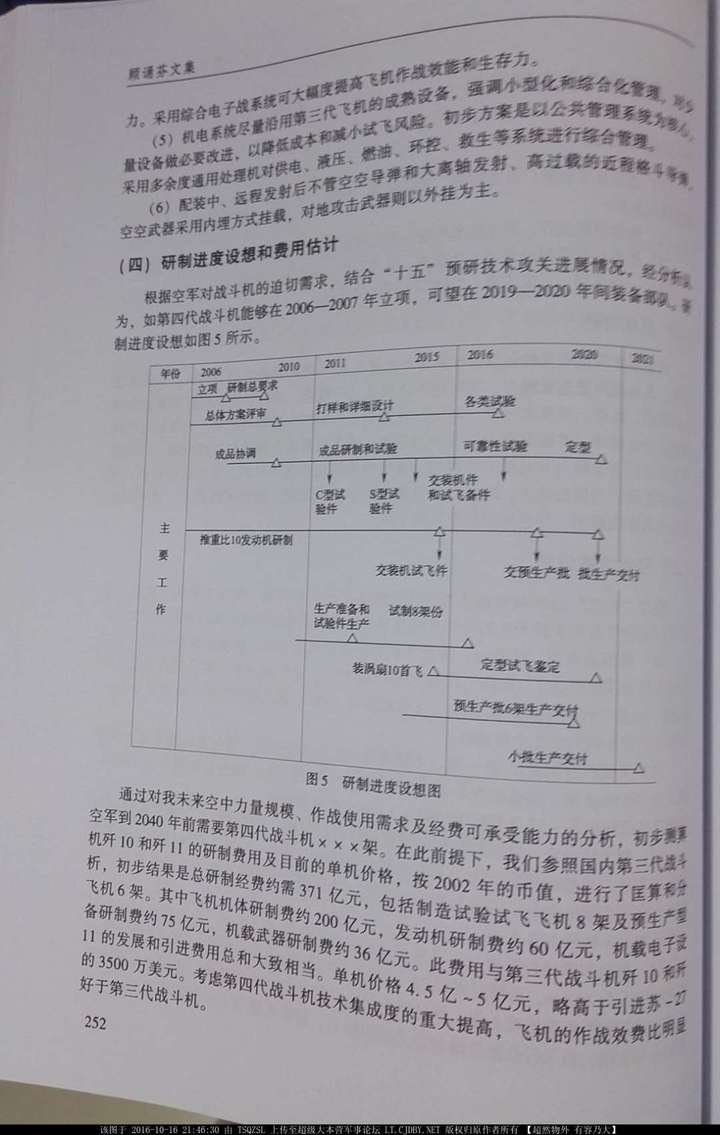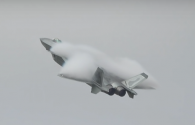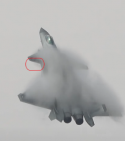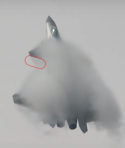I suspect you're not seeing the phenomenon I'm referring to. Just so we're all on the same page, I made some images of my own to show what I mean. Note that in all pictures, the J-20 is moving almost horizontally.
View attachment 96668
This corresponds to your stage 4 with canard downwash. The angle of attack is fairly shallow.
View attachment 96669
Look at the region I've circled. Unfortunately, the overcast background gets in the way, but you can see a new low pressure region forming at the trailing edge of the canard. The angle of attack is much higher than the previous picture at the J-20 turns into its climb.
View attachment 96670
The region from the trailing edge has extended downward and coupled with a low pressure region growing out of the main wing and LERX. This is why I'm deeply interested in this phenomenon - normally, low pressure regions form above physical surfaces and their boundaries don't extend beyond them. This system is forming in the empty space behind the canard and above the main wing. If you look at the clip, it looks like the low pressure region at the main wing is being pulled upward.
The J-20 here is near its greatest angle of attack and is about to accelerate vertically, which rapidly drops AoA and destroys these systems.
I don't think it's valid to dismiss this as just ho-hum downwash.




